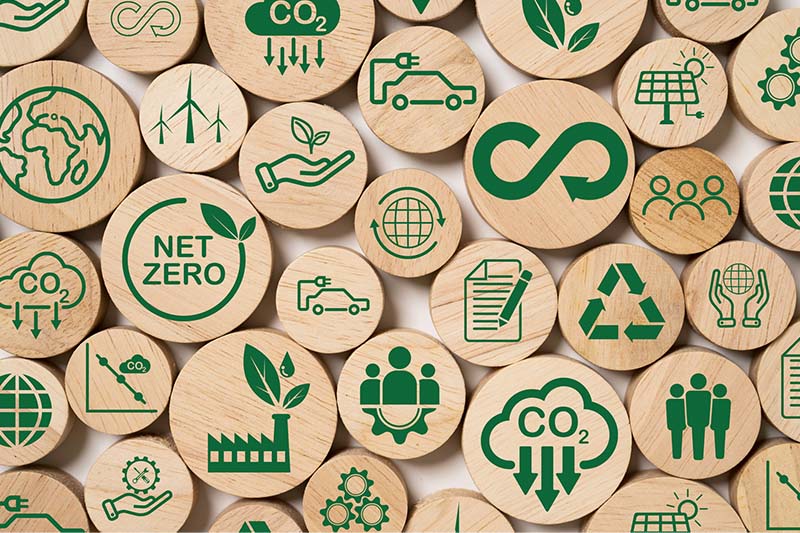
The Scoop on Sustainable Networks: How Fiber Plays a Role
When it comes to understanding the priorities of our modern lifestyle, businesses, services and platforms, speed, availability, consistency and capacity are often the words we hear most. However, sustainability has been steadily climbing to the top of the ‘must-haves’ list — and creeping to the forefront of everyone’s minds. After all, where will our communications capabilities and day-to-day lives be if we continue improving our connectivity at the expense of our environments?
It's true that networking and connectivity take a back seat in this green conversation as IT heavy lifters like data centers lead the sustainable charge. However, in support of our global community’s fight for more sustainable practices, network users and providers need to be joining the discourse. Answering questions and educating users on which solutions are greener than others and how businesses can ensure they’re reducing their strain on environmental resources is crucial for helping everyone fight the good fight.
So, where does fiber come in? Before we get there, let’s do some background research.
The Ins and Outs of a Sustainable IT Infrastructure and Network Connectivity
For most industries, technologies, communities, businesses and even countries, understanding environmental impacts (and hopefully optimizing them) comes down to two factors: What you consume and what you leave behind.
In developing sustainable IT infrastructure, critical resources like power and water dominate consumption within data management and network connectivity. On the other side of the equation, the remnants these elements leave behind come in the form of both invisible results such as heat and tangible discarded items such as e-waste from asset turnover. After all, innovation is the name of the game here, which means hardware gets replaced a lot even outside of regular maintenance activities.
So, when it comes to architecting sustainability alongside connectivity, we have to consider the materials with which we build our networks to support longevity and reduced turnover, and on the other hand we have to prioritize reduced power and energy usage. In 2022, it was reported that data transmission networks consumed 260-360 TWh — that’s 1-1.5% of global electricity use. Mobile networks accounted for around two thirds of total network energy consumption. This represents as much as a 64% increase since 2015. The tides of demand on connectivity aren’t very conducive to enhancing conservation and using less, but all hope is not lost.
Efforts to become greener in our data transmission are being prioritized constantly, and much of that burden falls on the shoulders of our industry’s most advanced technical leaders — but what can the average organization do? We’re lucky enough to have a one-word answer that can greatly improve day-to-day sustainability: Fiber.
Our efforts are directed towards creating not just connectivity but sustainable connectivity that supports long-term envirmoental goals
The Green Magic of Fiber: Benefits of Changing the Optics (and Realities) of Sustainability
Here’s some great news: Fiber optic networking isn’t just superior for its ability to check all of the boxes across speed, reliability, capacity and beyond — it’s also a great asset in the pursuit of sustainability. Yes, fiber optic benefits includes an opportunity to use more eco-friendly materials for building networks, reduce energy consumption and reduce waste. Let’s break that down further.
To begin, fiber optic strands and cables are made from abundant resources: silica and oxygen in the form of silicon. This is a strong departure from other copper-based methods, which require mining, because it’s readily available and offers a range of properties that improve transmission and reduce outages thanks to a high damage threshold. Furthermore, since fiber utilizes light instead of electricity, it significantly reduces resource consumption and carbon footprints.
With a higher bandwidth capacity than other methods, the longevity of fiber also helps us all out by reducing the amount of waste that enters landfills thanks to maintenance. Fiber cables don’t need to be wholly replaced in order to be upgraded and overall are good at standing the test of time (and exploding business demands) — which offers a twofold benefit of environmental sustainability and economic conservation. In fact, fiber optics also reduce or eliminate the need for additional hardware components like repeaters, which further reduces their discard potential.
Of course, in the pursuit of zero-carbon results and ultra-green futures, there’s always work to be done. It’s rare to find a perfect solution that leaves no trace and does no harm, but in a world of intense-competitive connectivity demands, fiber stands as our best ally. Beyond the environmental imperative though, there stands significant business benefit for adopting fiber. While it’s conserving energy, it’s also conserving cost — and while it’s reducing waste in the trash, it’s also reducing wasted budget, time and hassle thanks to its advanced connectivity capabilities.
At Glo Fiber Business, we’ve been delivering advanced, customizable fiber networking and internet solutions backed by high-touch, dedicated customer care for a long time. As an organization on a mission to support communities, we know that also means supporting, enriching and protecting the environments these communities, businesses and people live and work in. Is it any surprise we’re such ardent fiber advocates?
Become a champion of the planet with Glo Fiber Business — where your connectivity empowers community and sustainability